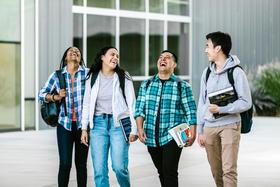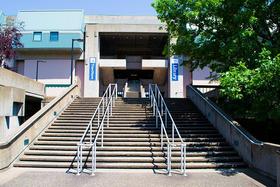School Highlights
Lakeside School of Massage Therapy served 53 students (25% of students were full-time).
Minority enrollment was 26% of the student body (majority Black), which was less than the state average of 35%.
School Overview
Lakeside School of Massage Therapy
(WI) Community College Avg.
Institution Control
Public
Public
Total Faculty
2 staff
419 staff
Student Body
Total Enrollment
53 students
5,183 students
Student-Teacher Ratio
n/a
16:1
# Full-Time Students
13 students
798 students
# Part-Time Students
40 students
4,385 students
# Enrollment Undergraduate
n/a
373 students
# Full-Time Undergraduate Students
53 students
798 students
# Full-Time Graduate Students
n/a
27 students
# Part-Time Undergraduate Students
40 students
4,624 students
# Part-Time Graduate Students
n/a
15 students
Total Dormitory Capacity
n/a
148 students
% American Indian/Alaskan
n/a
1%
% Asian
n/a
4%
% Hispanic
7%
10%
% Black
19%
9%
% White
74%
65%
% Two or more races
n/a
3%
% Unknown races
n/a
8%
Diversity Score
0.41
0.55
College Completion Rate (Students who graduate in less than 4 years)
90%
37%
College Completion Rate (Students who graduate in 4 years or more than 4 years)
n/a
22%
Average Graduate Earnings (10 Years)
$23,900
$35,300
Tuition and Acceptance Rate
% Students Receiving Some Financial Aid
31%
65%
Median Debt for Graduates
$9,500
$9,063
Median Debt for Dropouts
$4,750
$3,954
Acceptance Rate
93%
54%
ACT Composite
n/a
21
ACT English
n/a
19
ACT Math
n/a
20
Source: 2015 (or latest year available) Integrated Postsecondary Education Data System (IPEDS)
Frequently Asked Questions
What is the acceptance rate of Lakeside School of Massage Therapy?
The acceptance rate of Lakeside School of Massage Therapy is 93%, which is higher than the state average of 54%.
Recent Articles

How to Transfer from Community College to a Four-Year University in 2025
A step-by-step guide for community college students transferring to a four-year university in 2025 — updated strategies, data and expert insights.

Scholarships for Community College Students 2025
Explore updated scholarship programs, tuition data, and expert strategies for community college students in 2025.

The Rise of Technical and Vocational Training in 2025
Explore the 2025 surge in technical and vocational training—enrollment, policy, costs, and why this path is gaining ground for students and parents.





